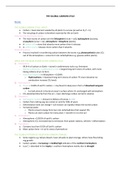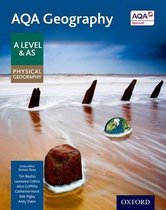Lecture notes
AQA A level Geography Notes: Physical Geography - The Carbon & Water Cycle
A* level notes on the global Carbon & Water cycle for the physical side of the AQA course. Topics covered include: CARBON CYCLE: - Stores - The Global Carbon Cycle: Transfers - Changes in The Carbon Cycle: Human & Physical Causes - The Carbon Budget - Water, Carbon And Climate Change - C...
[Show more]




